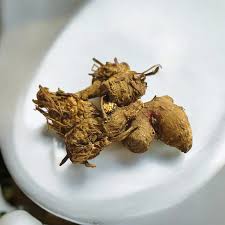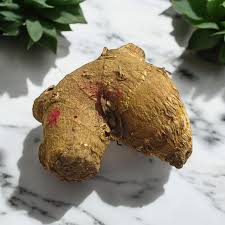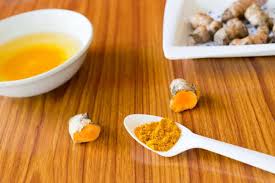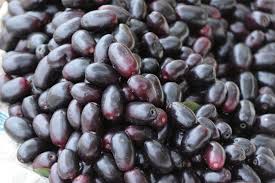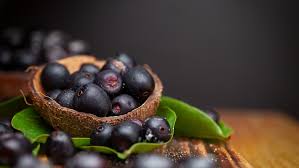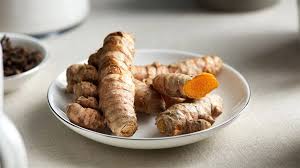
Kaali Haldi for Skin Infections: Antibacterial Properties Explained
Skin infections are a common problem in all age groups, often caused by bacteria, fungi, or viruses. These infections can range from minor irritations like acne, boils, and rashes to more serious conditions such as eczema flare-ups, fungal infections, or bacterial abscesses. While many rely on chemical-based creams and antibiotics, frequent use can lead to resistance or side effects.
That’s why more people are turning to traditional herbs, especially Kaali Haldi (Curcuma caesia)—a powerful and rare Ayurvedic remedy known for its natural antibacterial, antifungal, and anti-inflammatory properties. This lesser-known cousin of regular turmeric is highly effective in treating various skin conditions and infections when used both topically and internally.
At Dirghaanshi, we aim to revive the healing power of Jadi Buti. This guide explores how Kaali Haldi works as a natural antibacterial agent, why it is beneficial for skin health, and how to use it safely and effectively.
Long Description
What Causes Skin Infections?
Skin infections are caused by the overgrowth of microbes like:
Bacteria (e.g., Staphylococcus aureus) – causes boils, impetigo, cellulitis
Fungi (e.g., Candida, Ringworm) – causes athlete’s foot, rashes
Viruses (e.g., herpes simplex) – causes cold sores, shingles
Common triggers include:
Poor hygiene
Excess sweating
Weak immunity
Hormonal imbalances
Cuts, wounds, or bug bites
Allergic reactions or skin trauma
Chemical treatments often lead to dryness, skin thinning, or resistance. This is where Kaali Haldi steps in as a safe, effective, and natural alternative.
What is Kaali Haldi (Black Turmeric)?
Kaali Haldi, also known as Black Turmeric, is a rare herb from the turmeric family. It has a dark bluish-black core and a strong, camphor-like scent.
Botanical Name: Curcuma caesia
Family: Zingiberaceae (same as ginger and regular turmeric)
Part Used: Rhizome (root)
Taste (Rasa): Pungent, bitter
Virya (Potency): Hot (Ushna)
Effect on Doshas: Balances Kapha and Vata, mildly increases Pitta
Used in tribal medicine and Ayurveda for centuries, Kaali Haldi is known to:
Fight bacterial and fungal infections
Heal wounds, cuts, and burns
Reduce itching, redness, and inflammation
Detoxify skin and blood
Antibacterial and Skin-Healing Properties of Kaali Haldi
- Fights Bacterial Infections Naturally
Kaali Haldi is rich in curcuminoids, camphor, turmerone, and volatile oils. These compounds:
Inhibit the growth of gram-positive and gram-negative bacteria
Destroy bacterial membranes and disrupt their activity
Treat infections caused by Staphylococcus aureus, E. coli, and more
This makes it ideal for treating:
Pimples and acne
Boils and pus-filled eruptions
Infected wounds and skin lesions
Bacterial dermatitis or eczema
- Antifungal and Antiviral Activity
Apart from bacteria, Kaali Haldi is also effective against fungal and viral skin pathogens.
Inhibits fungal growth in conditions like ringworm, athlete’s foot, and candidiasis
Reduces itching and skin peeling
Helps manage viral eruptions such as cold sores or skin inflammation during fevers
Its antimicrobial action makes it a broad-spectrum natural remedy for the skin.
- Reduces Inflammation and Itching
Infections often bring swelling, redness, and itching. Kaali Haldi helps by:
Suppressing pro-inflammatory enzymes like COX-2
Reducing histamine responses that cause irritation
Calming the skin and speeding up recovery
It is especially beneficial for those with sensitive or reactive skin.
- Promotes Wound Healing and Skin Regeneration
Kaali Haldi:
Speeds up cell repair and tissue regeneration
Boosts blood circulation to the skin
Prevents scarring and marks after healing
Strengthens skin barrier against future infections
It is often used in Ayurvedic lep (pastes) for cuts, insect bites, and bruises.
- Detoxifies the Blood and Skin from Within
Skin health is often linked to blood impurities and gut toxins. Kaali Haldi:
Purifies the blood by enhancing liver function
Reduces skin eruptions caused by heat and toxins
Prevents recurrence of infections caused by internal imbalance
Ayurveda believes that clear skin reflects clean internal systems—and Kaali Haldi supports both.
Ayurvedic Perspective: Kaali Haldi for Skin Healing
According to Ayurveda, skin infections are primarily caused by:
Vitiation of Kapha and Pitta doshas
Ama (toxic buildup) in the blood and skin
Weak Rakta Dhatu (blood tissue)
Kaali Haldi:
Pacifies Kapha (associated with mucus, swelling)
Clears Pitta (associated with inflammation, redness)
Enhances digestive fire (Agni) to remove Ama
Strengthens Rakta Dhatu, promoting clear and healthy skin
It is classified as Shothahara (anti-inflammatory), Krimighna (anti-microbial), and Raktashodhak (blood purifier).
How to Use Kaali Haldi for Skin Infections
- Kaali Haldi Antibacterial Paste (Topical)
Ingredients:
1 tsp Kaali Haldi powder
A few drops of neem oil or coconut oil
Rosewater to make a paste
How to use:
Apply directly on boils, rashes, or acne
Leave for 20–30 minutes and rinse with lukewarm water
Use daily until the infection subsides
- Kaali Haldi and Aloe Vera Gel
For sensitive skin or fungal infections:
Mix Kaali Haldi powder with fresh aloe vera gel
Apply on itchy patches or rashes
Leave overnight if needed
Benefits: Soothes skin while fighting infection
- Kaali Haldi Detox Drink (Internal Use)
Mix ¼ tsp Kaali Haldi powder in warm water or milk
Add a pinch of black pepper
Drink daily for 2 weeks to cleanse blood and improve immunity
- Kaali Haldi Herbal Bath
Add 1 tbsp Kaali Haldi powder and neem leaves to bathwater
Bathe regularly for fungal and bacterial skin protection
- Kaali Haldi Capsules
Dose: 500–1000 mg per day under Ayurvedic guidance
Useful for chronic skin conditions and internal detoxification
Precautions
Do not apply to open, deep wounds without consulting a practitioner
Avoid overuse, especially on Pitta-prone skin (can cause warmth)
Always perform a patch test before first topical use
Pregnant and lactating women should consult a physician before use
Who Should Use Kaali Haldi for Skin Health?
Kaali Haldi is ideal for:
People with acne, boils, or infected pimples
Those suffering from fungal skin infections
Individuals prone to recurrent skin allergies or eczema
Those wanting to purify blood and detox the liver
Anyone seeking a natural skin antibiotic without chemicals
Scientific Evidence Supporting Kaali Haldi’s Antibacterial Effect
Preliminary research and traditional reports highlight that:
Kaali Haldi exhibits strong activity against bacterial and fungal pathogens
It has compounds like curcuminoids, camphene, and cineole, which break microbial cell membranes
Extracts show potential against MRSA, a resistant strain of Staphylococcus
Anti-inflammatory effects were shown in animal models of skin swelling
While more human trials are awaited, tribal medicine and Ayurvedic texts have used it for centuries with good results.
Dirghaanshi’s Take on Herbal Skin Solutions
At Dirghaanshi, we promote ancient healing systems with modern understanding. Skin infections can harm confidence and comfort, but nature provides safer, cleaner solutions. Kaali Haldi, with its antibacterial and skin-regenerating properties, is a holistic way to heal.
Our goal is to restore skin health from the root, using Jadi Buti that your skin and body recognize as healing allies.
Conclusion
Kaali Haldi is more than a herbal root—it’s a powerful, natural shield against skin infections. With its unique blend of antibacterial, antifungal, anti-inflammatory, and blood-purifying properties, it offers a complete skin-care remedy for both minor and chronic issues.
Whether you’re battling acne, boils, rashes, or fungal infections, Kaali Haldi can support you in achieving clear, healthy, and radiant skin—naturally. By including it in your wellness and skincare routine, you align with age-old Ayurvedic wisdom that heals not just the symptoms, but the underlying imbalances.
Let Dirghaanshi guide your journey toward skin health rooted in tradition and powered by nature.


